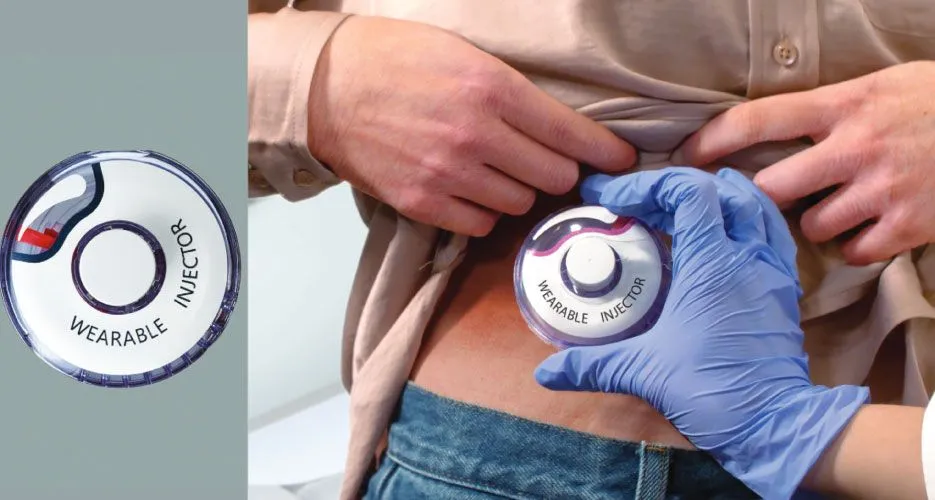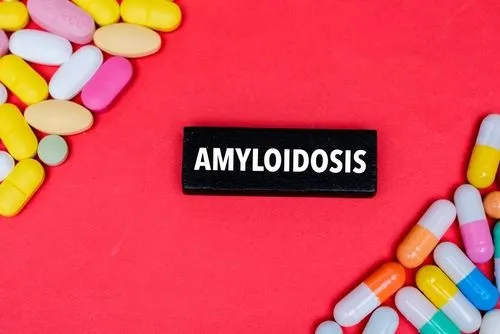A Delicate Topic: Who Gets CAR-T?

Editor's Note: The following paper was researched as the FDA was approving bi-specific antibody therapies like talquetamab. Myeloma centers are now being allocated 2-6 slots monthly depending on CAR availability, making it much more accessible than it began.
The July 2023 issue of the Journal of the American Medical Association includes a discussion-provoking “viewpoint” piece from two physicians affiliated with the University of Chicago questioning whether the current methods institutions use to allocate scarce CAR-T cell therapies for Relapsed/Refractory Multiple Myeloma (RRMM).
The authors state that the availability of the two FDA-approved CAR-T treatments in the US continues to be constrained by:
- The current technology used to engineer/manufacture a patient’s CAR-T cells requires “at least 6 weeks”. This is a long period for patients who have been heavily pretreated and who may not be alive by the time their CAR-T cells are available for infusion.
- Both manufacturers of the currently approved products (Bristol Meyers and Johnson & Johnson/Janssen/Legend Biotech) have a limited supply of lentiviral vectors which, in turn, limits the amount of leukapheresis (T-cell harvesting) slots.
- Both manufacturers have had their hands full with “the challenges of increasing scale while maintaining quality.”
It needs to be mentioned, however, that both manufacturers have invested/and are continuing to invest heavily to make progress with respect to the three bullet points mentioned above.
Still, a study published in the April 2023 issue of the Journal Transplantation and Cellular Therapy reports that a survey of the CAR-T physician leaders of 17 myeloma treatment centers in the US showed that “A median of 1 slot is allocated per month per center, and the median number of patients per center on the waitlist since the FDA's approval of idecabtagene vicleucel [Abecma] is 20 (range, 5 to 100). As a result, patients remain on the waitlist for a median of 6 months (range, 2 to 8 months) prior to leukapheresis.”
[Unfortunately, no data were available for Carvykti as that product did not receive FDA approval until February 2022.]
The University of Chicago authors (first paper referenced above) indicate that there are 170,000 myeloma patients in the US and predict that, despite the efforts to increase capacity by both Bristol Myers and Johnson and Johnson, “… this severe shortage will likely increase as CAR T-cell therapy demonstrates superior efficacy over alternatives earlier in the course of multiple myeloma. Even if new therapies such as off-the-shelf bispecific antibodies reduce demand, there will not be enough CAR T-cell therapy slots for all eligible patients” [emphasis added].
This brings us to the big question of “Who should receive priority access to CAR-T treatment while overall supply continues to be restricted?”
The second paper referenced above gives some guidance as to which criteria are used in the 17 “high volume” CAR-T centers that responded to a survey as to how centers allocate scarce supply slots to a large patient pool.
“For patient selection, all centers reported using a committee of experienced CAR-T physicians to ensure consistency.”
In addition, centers also reported using ethical values for patient selection:
| Decision Criterion | % of Centers |
| Equal treatment (time spent on the waiting list) | 71 % |
| Priority to the worst-off (limited therapeutic options for the patient) | 82 % |
| Myeloma burden of the patient | 65 % |
| High stem cell transplant comorbidity index | 29 % |
| Maximize CAR-T benefit (patients who are most likely to complete apheresis or CAR-T infusion or to achieve response) |
76 % (complete apheresis) 76 % (complete CAR-T infusion) 47 % (achieve response) |
| Social value (preference to younger patients) | 18 % |
The University of Chicago authors of the first paper referenced earlier take issue with some of the decision criteria mentioned in the table above:
- “Equal treatment” or “first come, first served” using the initial appointment date at the referral center to construct CAR-T waiting lists. The authors posit that the US healthcare system prioritizes wealthy and well-connected patients for advanced treatments.“Historically marginalized populations have delays in gaining access to stem cell transplant; the same may occur with CAR T-cell therapy.” The authors advocate going to the “Complete Lives System that incorporates the five principles of youngest-first, prognosis, save the most lives, lottery, and instrumental value.”
- Waiting time for CAR-T should be counted from the disease state and not the initial appointment date. Specifically, “… start counting waiting time from the date when the patient met regulatory agency indications for CAR T-cell treatment. Centers should identify and document this disease progression date and order their waitlist accordingly. This approach treats people equally and avoids constructing a waitlist that is heavily dependent on socioeconomic status and access to health care. Instead, patients should be considered based on the time when their disease relapsed on the requisite number of therapies.”
- Avoid arbitrarily prioritizing subcategories of eligible patients. The authors clearly state that “it is truly unknown which subgroups benefit most from CAR-T therapy”. They argue that prioritizing the treatment of patients with the highest disease burden and aggressiveness may not maximize the overall benefit to the patient population as the least efficient outcome for a patient is when he/she passes away during the vein-to-vein delay. They conclude “In contrast to organ allocation policy, which is based on empirical analysis of hundreds of thousands of recipients, we lack sufficient information to make a rigorous survival benefit–based score for CAR T-cell therapy allocation. With more data, an accurate model of survival benefit from CAR T-cell therapy should be possible, but using an arbitrary score that has not been rigorously externally validated may lead to lower benefits than random allocation while unfairly deprioritizing large classes of patients.”
- Prioritize patients from socially disadvantaged areas such as black patients, as well as patients from rural communities with high area [health care] deprivation. “Providing transportation and temporary lodging proximal to the medical center is one way to help alleviate issues of social support and transportation. CAR T-cell therapy centers and manufacturers can also actively counter these structural inequities by reserving slots for patients from socially disadvantaged neighborhoods in their primary service area proportional to their local expected multiple myeloma burden.”
Each of us patients for whom CAR-T treatment provides a lifeline will have our own reasons/rationale why we ought to be bumped up in the waiting line, but we are clearly skating on “bioethics” ice.
HealthTree is not taking sides in this debate, and we leave these decisions in the very capable hands of our myeloma specialists who must balance several factors, as outlined above, to decide who gets a higher slot in the line. This post puts this delicate topic on the table for discussion among us patients and with our physicians and for reflection for ourselves.
Those interested in learning more about the bio-ethics of allocating scarce medical interventions to patients may wish to read an interesting paper authored by a duo from the Department of Bioethics of the US National Institute of Health.
This paper gives ample food for thought for any of us who would like to move up in the waiting line for CAR-T treatment. This paper also explains the rationale for the Complete Lives System (mentioned above) in detail, even though this method also has its very own issues that many of us may take issue with.
CAR-T Therapy Resources
-
Myeloma Medication: CAR T- Cell Therapy
-
HealthTree Connect: CAR-T Therapy Group
-
HealthTree University: CAR-T Education Unit
Editor's Note: The following paper was researched as the FDA was approving bi-specific antibody therapies like talquetamab. Myeloma centers are now being allocated 2-6 slots monthly depending on CAR availability, making it much more accessible than it began.
The July 2023 issue of the Journal of the American Medical Association includes a discussion-provoking “viewpoint” piece from two physicians affiliated with the University of Chicago questioning whether the current methods institutions use to allocate scarce CAR-T cell therapies for Relapsed/Refractory Multiple Myeloma (RRMM).
The authors state that the availability of the two FDA-approved CAR-T treatments in the US continues to be constrained by:
- The current technology used to engineer/manufacture a patient’s CAR-T cells requires “at least 6 weeks”. This is a long period for patients who have been heavily pretreated and who may not be alive by the time their CAR-T cells are available for infusion.
- Both manufacturers of the currently approved products (Bristol Meyers and Johnson & Johnson/Janssen/Legend Biotech) have a limited supply of lentiviral vectors which, in turn, limits the amount of leukapheresis (T-cell harvesting) slots.
- Both manufacturers have had their hands full with “the challenges of increasing scale while maintaining quality.”
It needs to be mentioned, however, that both manufacturers have invested/and are continuing to invest heavily to make progress with respect to the three bullet points mentioned above.
Still, a study published in the April 2023 issue of the Journal Transplantation and Cellular Therapy reports that a survey of the CAR-T physician leaders of 17 myeloma treatment centers in the US showed that “A median of 1 slot is allocated per month per center, and the median number of patients per center on the waitlist since the FDA's approval of idecabtagene vicleucel [Abecma] is 20 (range, 5 to 100). As a result, patients remain on the waitlist for a median of 6 months (range, 2 to 8 months) prior to leukapheresis.”
[Unfortunately, no data were available for Carvykti as that product did not receive FDA approval until February 2022.]
The University of Chicago authors (first paper referenced above) indicate that there are 170,000 myeloma patients in the US and predict that, despite the efforts to increase capacity by both Bristol Myers and Johnson and Johnson, “… this severe shortage will likely increase as CAR T-cell therapy demonstrates superior efficacy over alternatives earlier in the course of multiple myeloma. Even if new therapies such as off-the-shelf bispecific antibodies reduce demand, there will not be enough CAR T-cell therapy slots for all eligible patients” [emphasis added].
This brings us to the big question of “Who should receive priority access to CAR-T treatment while overall supply continues to be restricted?”
The second paper referenced above gives some guidance as to which criteria are used in the 17 “high volume” CAR-T centers that responded to a survey as to how centers allocate scarce supply slots to a large patient pool.
“For patient selection, all centers reported using a committee of experienced CAR-T physicians to ensure consistency.”
In addition, centers also reported using ethical values for patient selection:
| Decision Criterion | % of Centers |
| Equal treatment (time spent on the waiting list) | 71 % |
| Priority to the worst-off (limited therapeutic options for the patient) | 82 % |
| Myeloma burden of the patient | 65 % |
| High stem cell transplant comorbidity index | 29 % |
| Maximize CAR-T benefit (patients who are most likely to complete apheresis or CAR-T infusion or to achieve response) |
76 % (complete apheresis) 76 % (complete CAR-T infusion) 47 % (achieve response) |
| Social value (preference to younger patients) | 18 % |
The University of Chicago authors of the first paper referenced earlier take issue with some of the decision criteria mentioned in the table above:
- “Equal treatment” or “first come, first served” using the initial appointment date at the referral center to construct CAR-T waiting lists. The authors posit that the US healthcare system prioritizes wealthy and well-connected patients for advanced treatments.“Historically marginalized populations have delays in gaining access to stem cell transplant; the same may occur with CAR T-cell therapy.” The authors advocate going to the “Complete Lives System that incorporates the five principles of youngest-first, prognosis, save the most lives, lottery, and instrumental value.”
- Waiting time for CAR-T should be counted from the disease state and not the initial appointment date. Specifically, “… start counting waiting time from the date when the patient met regulatory agency indications for CAR T-cell treatment. Centers should identify and document this disease progression date and order their waitlist accordingly. This approach treats people equally and avoids constructing a waitlist that is heavily dependent on socioeconomic status and access to health care. Instead, patients should be considered based on the time when their disease relapsed on the requisite number of therapies.”
- Avoid arbitrarily prioritizing subcategories of eligible patients. The authors clearly state that “it is truly unknown which subgroups benefit most from CAR-T therapy”. They argue that prioritizing the treatment of patients with the highest disease burden and aggressiveness may not maximize the overall benefit to the patient population as the least efficient outcome for a patient is when he/she passes away during the vein-to-vein delay. They conclude “In contrast to organ allocation policy, which is based on empirical analysis of hundreds of thousands of recipients, we lack sufficient information to make a rigorous survival benefit–based score for CAR T-cell therapy allocation. With more data, an accurate model of survival benefit from CAR T-cell therapy should be possible, but using an arbitrary score that has not been rigorously externally validated may lead to lower benefits than random allocation while unfairly deprioritizing large classes of patients.”
- Prioritize patients from socially disadvantaged areas such as black patients, as well as patients from rural communities with high area [health care] deprivation. “Providing transportation and temporary lodging proximal to the medical center is one way to help alleviate issues of social support and transportation. CAR T-cell therapy centers and manufacturers can also actively counter these structural inequities by reserving slots for patients from socially disadvantaged neighborhoods in their primary service area proportional to their local expected multiple myeloma burden.”
Each of us patients for whom CAR-T treatment provides a lifeline will have our own reasons/rationale why we ought to be bumped up in the waiting line, but we are clearly skating on “bioethics” ice.
HealthTree is not taking sides in this debate, and we leave these decisions in the very capable hands of our myeloma specialists who must balance several factors, as outlined above, to decide who gets a higher slot in the line. This post puts this delicate topic on the table for discussion among us patients and with our physicians and for reflection for ourselves.
Those interested in learning more about the bio-ethics of allocating scarce medical interventions to patients may wish to read an interesting paper authored by a duo from the Department of Bioethics of the US National Institute of Health.
This paper gives ample food for thought for any of us who would like to move up in the waiting line for CAR-T treatment. This paper also explains the rationale for the Complete Lives System (mentioned above) in detail, even though this method also has its very own issues that many of us may take issue with.
CAR-T Therapy Resources
-
Myeloma Medication: CAR T- Cell Therapy
-
HealthTree Connect: CAR-T Therapy Group
-
HealthTree University: CAR-T Education Unit

about the author
Paul Kleutghen
I am a patient diagnosed in 2014 with primary plasma cell leukemia (pPCL), a rare and aggressive variant of multiple myeloma and have been very fortunate to find successful treatment at the division of Cellular Therapy at the Duke University Cancer Institute. My wife, Vicki, and I have two adult children and two grandsons who are the ‘lights of our lives’. Successful treatment has allowed Vicki and I to do what we love best : traveling the world, albeit it with some extra precautions to keep infections away. My career in the pharmaceutical industry has given me insights that I am currently putting to use as an advocate to lower drug pricing, especially prices for anti-cancer drugs. I am a firm believer that staying mentally active, physically fit, compliant to our treatment regimen and taking an active interest in our disease are keys to successful treatment outcomes.
More on Treatment Advances
Trending Articles
Upcoming Events




Get the Latest Multiple Myeloma Updates, Delivered to You.
By subscribing to the HealthTree newsletter, you'll receive the latest research, treatment updates, and expert insights to help you navigate your health.











